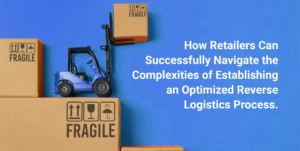The Internet has made it possible for even small entrepreneurs to reach around the world.
Unfortunately, this doesn’t make your job any easier. Anyone can sell a product, but not everyone can make a profit on it.
It’s not just because competition is fierce, though it is a factor. Just throwing your products up on a webpage with a price tag doesn’t work. There’re relationships to be built, website security to establish, among other things.
The good news is you’re not the first person to do this. Plenty of people have done it, which means all you have to do is learn from them.
1. Developing Strong Customer Relations
The first big problem you face as an entrepreneur is developing customer loyalty and relationships.
Trust is hard to earn when their experience with your company is behind a webpage. It doesn’t help that people are appropriately cautious when approaching anything online.
Solving the problem starts by understanding where they’re coming from. People tend to work with known quantities. You are not a known quantity, so solving the problem boils down letting them get to know you.
Put information about your company everywhere. Put up company profiles and employee credentials. Use your team’s history to substitute for a relationship until you can develop one with your target market.
You can also overpower their caution by appealing to their curiosity. If you can impress them by offering something unique, they’ll consider taking a chance on you worth the risk.
This means emphasizing and elaborating on your unique selling point.
2.Exchanges, Returns, and Refunds
One of the biggest issues you’ll face are exchanges, returns, and refunds, and how you’ll handle them.
A well-constructed packaging and shipping system may work, but that doesn’t mean you can handle returns. Getting caught off guard is a great way to lose customer faith. It’s part of good customer service.

Each kind of interaction must have its own policy and that policy should be properly promulgated. Make it easy to find and provide two copies – one using legal terminology and one that’s layman-accessible.
A no-returns policy is also acceptable, especially early one, but consider changing it up as your start-up grows.
3. Security
One of the biggest fears you’ll have as an entrepreneur revolves around security.
Even as a small company, you’ll be a target for online shenanigans and you need to prepare for it. The moment a hack happens and sensitivity customer information is stolen, you’ll lose their trust. It’s hard to get someone’s trust back once you’ve proven unreliable at protecting them, so it’s best not to lose it at all.
Basic safety measures such as regularly changing your password and customizing database elements will work well, but they aren’t enough. Look into tools that increase security and hire a professional to make sure everything’s as safe as possible. You should also thoroughly vet anyone who has access to customer information.
Just because you’re an e-commerce site doesn’t mean criminals can’t access information through more conventional means.
4. Dealing with Mobile Devices
Most people can access the Internet through their phone. They also do a lot of business through their phone, up to and including making purchases.
If your website can’t accommodate them, you risk losing a lot of business simply because you made it difficult for them to purchase your services.

Making a mobile friendly website is a good start, but it’s far from enough. Your checkout process must be optimized for mobile devices as well.
If you can afford to do so, look into creating a mobile app. Not only does it give a more mobile-focused experience, it gives customers another way to interact with your products and company.
5. Fulfilling Orders
On paper, this sound simple. You’ve done your primary task as an entrepreneur and you’ve gotten a sale. All that’s left is to get the product to them, right?
Logistics enters the picture and things get complicated fast. Different products require different packaging. Different couriers have different rates and speeds.
Without a strong shipping and packing process, you’ll find it difficult to raise customer satisfaction. When you run an ecommerce business, you’re promising comfort and accessibility. If you can’t provide that, you won’t succeed.
There are a number of things that make up efficient shipping. The first is dependable and well-trained people. You’ll also need software that can track and manage your inventory. Alongside that, you’ll need the hardware required to store and procure products in a warehouse.
The last aspect is a reliable courier. A courier losing a product tends to put blame on them, but you’ll share in the liability.
There’s a lot of opportunity available when going into ecommerce as an entrepreneur. However, it’s not magic. As with any start-up, it must be approached in a systematic and prepared manner. Get off on the right foot and you’ll find it easier to grow.

Ready To Upgrade Your Logistic Solution?
Speak to Floship ecommerce logistic consultant about improving your global support chain today





